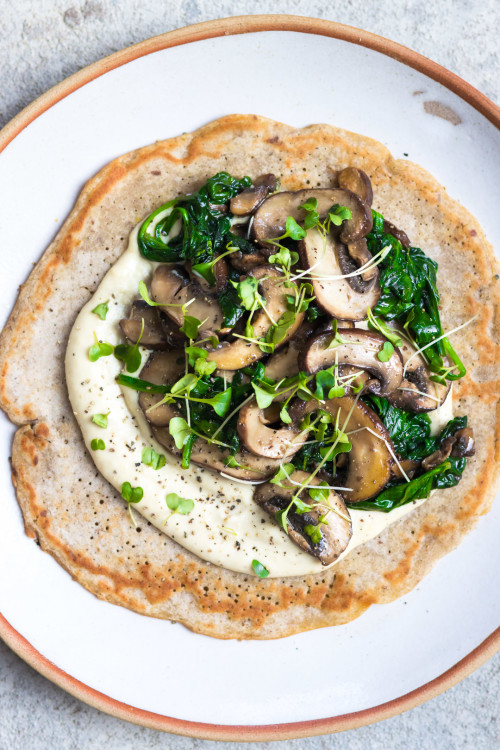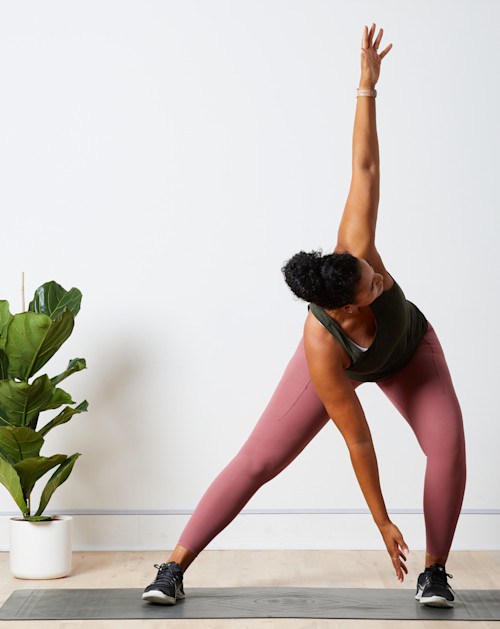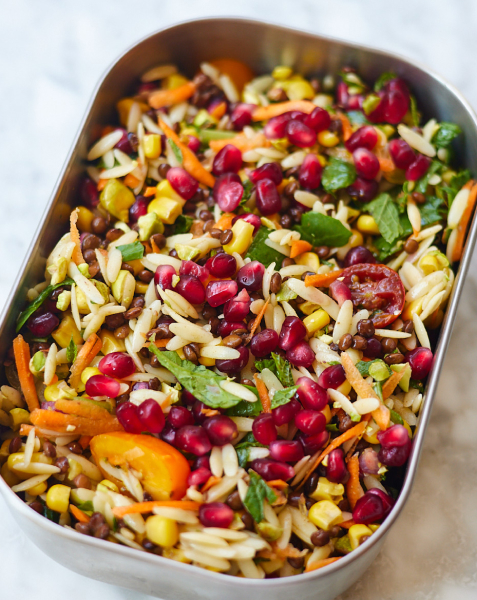When it comes to cultivating healthy habits that will last a lifetime, it all starts with making small, consistent improvements that can make a real difference in the long-run. Healthy eating shouldn’t be about rigid rules and restrictions, it’s about nourishing your body with balanced meals that leave you feeling satisfied, full of energy and thriving. One of the simplest ways to set this in motion is to get into the routine of packing a healthy lunch.
There are many reasons why packing your own lunch is a good idea — not only is it a smart way of saving money, it’s likely to be healthier and more delicious than a shop-bought option. Making lunch yourself gives you the opportunity to create a meal that provides the energy and nutrients you need to keep you (or your kids) going throughout the afternoon. It also means that instead of spending your precious lunch hour trying to decide what to eat, you have time to do other things.
But I get it — packing your own lunch can seem like a chore. Plus, if you don’t pack it right, you’ll end up with a soggy meal that’s uninspiring. It can also get boring fast, especially if you’re eating the same things day after day. But it doesn’t have to be this way. Whether you’re going to the office, working from home or prepping for the kids and need some fresh inspiration to get your lunch-packing game on track, here are some simple tips for putting together healthy lunches that are both delicious and nutritious.
1. Have the right tools
If you’re going to pack a good lunch, you’ll need the right equipment. Invest in some storage containers with snap-top lids for leftovers and batch-cooked meals, or reuse large jars for layered salads. Bento-style boxes with different compartments are great for children, especially fussy eaters — they make it easier to pack a variety of foods while adding an element of fun to lunchtimes. Consider using an insulated lunch bag to maintain the temperature of perishable items, with room for ice packs (if needed) for keeping things cool without a fridge. Salads last much longer without dressing (and retain that crispy texture), so pack the dressing in a separate container, to add before serving — I’m always on the lookout for little jars that I can reuse for dressings and dips. If you’re preparing a layered salad in a jar, place the dressing at the bottom.
2. Prep ahead
Meal planning ahead of time can really save you the stress of evenings spent wondering what to pack for lunch, before admitting defeat and opting for a disappointing supermarket sandwich the next day. Batch cooking is your friend when it comes to easy take-to-work lunches. Set aside some time at the weekend to prepare meals such as curries, stews, chillis and soups, then divide into single-serve portions and store in the freezer for grab-and-go lunches later in the week. Also remember that dinner leftovers can be revamped from the night before to make great lunches in a hurry — leftover roasted veg is delicious in sandwiches, wraps and salads; rice or noodles can be used in rainbow bowls; and any leftover chillis or stews can be served on toast. Batch preparing sweet and savoury muffins, energy bites, oat bars and fritters is a winner for kids lunchboxes — simply keep in the freezer until needed as they defrost quickly.
3. Make it balanced
For a lunch that is both nourishing and satisfying, include a balance of root veg and wholegrains (brown rice, quinoa, sweet potatoes, wholegrain bread), protein (tofu, lentils, beans), colourful veg (leafy greens, tomatoes, broccoli, peppers) and healthy fats (avocado, olive oil, nuts, seeds). This combination will help you to feel satisfied for hours without hitting that 3 o’clock slump, and means you’re maximising your intake of different vitamins, minerals, fibre and beneficial nutrients. Getting the right balance of food groups is also really important for children as it provides them with the energy and nutrients they need to focus throughout the afternoon.
4. Make it colourful
They say the first taste is with the eye and not without reason, as research suggests that our perception of taste, smell and flavour are dominated by what we see (1). By including a colourful array of fruits and vegetables as part of your lunch, you’re not only providing a wealth of phytonutrients and antioxidants which are crucial for health, but also enhancing the flavour of your homemade packed lunch. When it comes to childrens’ lunch boxes, kids are more likely to eat food that looks fun and colourful — crunchy vegetable crudités are a great way to add a rainbow of colour; team them with a dollop of hummus, yoghurt or a bean dip and you have a perfectly balanced snack.
5. Include a variety of textures
Adding a range of different textures can really enhance a meal and make it a lot more satisfying. Consider sprinkling toasted nuts, seeds or roasted chickpeas over salads or soups, add raw veggies to sandwiches, pittas and wraps, and use sturdy greens like kale which stand up to being packed in containers better than delicate greens such as spinach. Pre-cooked lentils, beans, grains and jars of roasted vegetables are also great staples to have in the cupboard to add more variety without having to cook anything extra.
6. Get the kids involved
If you’re packing lunch for little ones, let them have a say on what goes into their lunchbox (within limits!). Involving them in the preparation process can make them more excited about healthy choices, while also providing an opportunity to teach them about different foods. Try to also include familiar foods in their lunchbox and show them what you’ve packed.
7. Keep it simple
Although packing a healthy lunch takes a little forward planning, it doesn’t need to be complicated. Including an abundance of colour and variety, with foods that you actually enjoy, will go a long way to building a healthy lunch that you’ll look forward to eating and will leave you feeling energised. And remember, healthy food is also about having fun and enjoying it with people, so it’s ok to give yourself an occasional break and have lunch out of the office with friends.
My go-to choices for a healthy lunch
Salad Bowls
Sinéad Berry
Registered Nutritionist (MSc, mBANT, rCNHC)
@sineadberrynutrition
www.sineadberry.com
References
1. van der Laan L, de Ridder D, Viergever M, Smeets P. The first taste is always with the eyes: A meta-analysis on the neural correlates of processing visual food cues. NeuroImage. 2011; 55(1): 296-303.



























